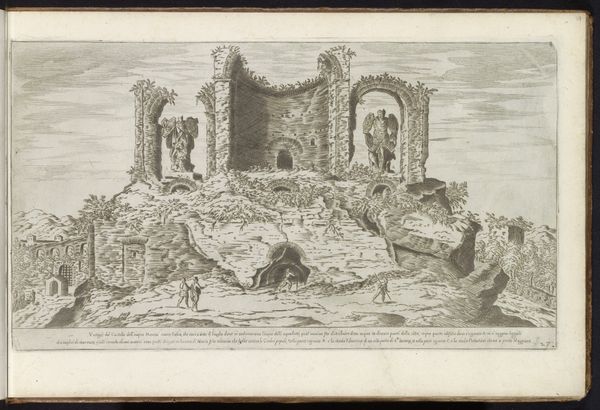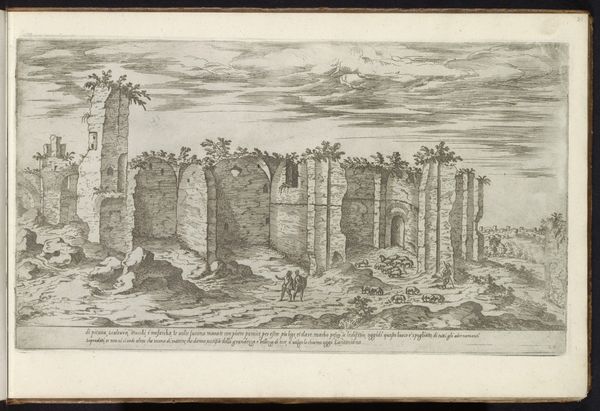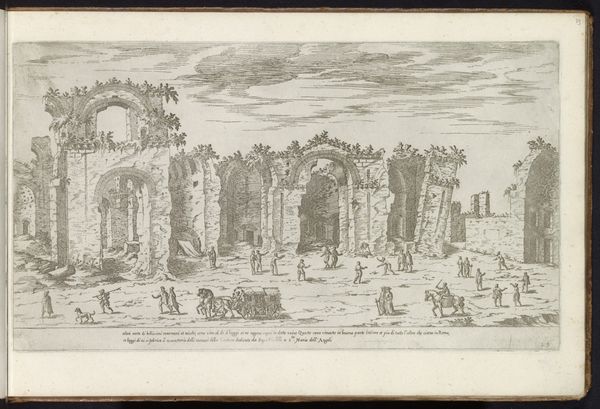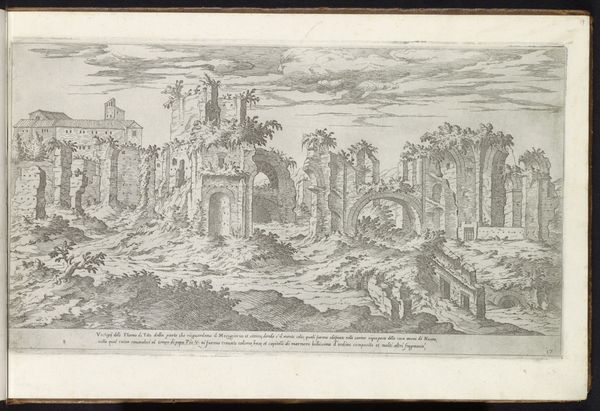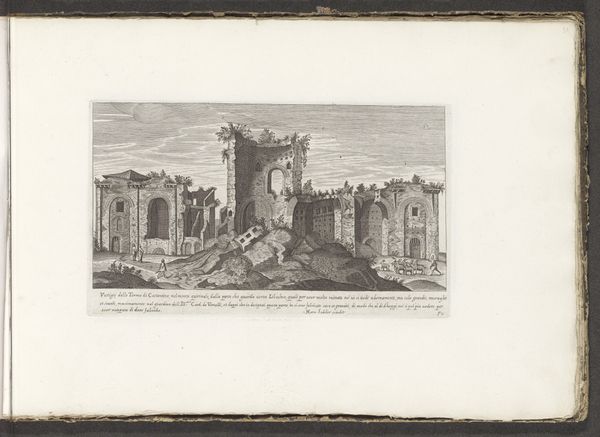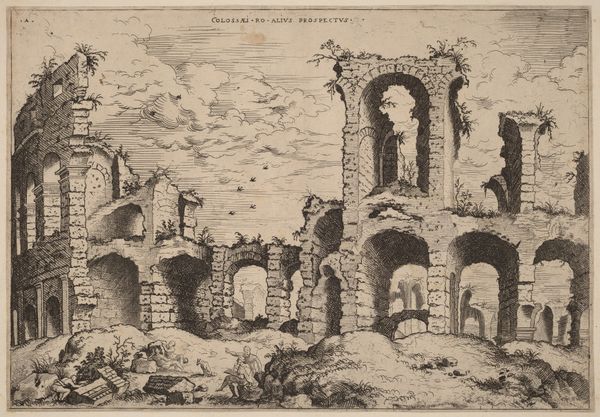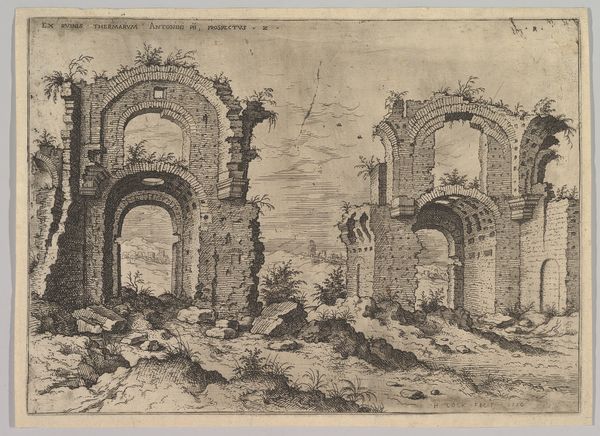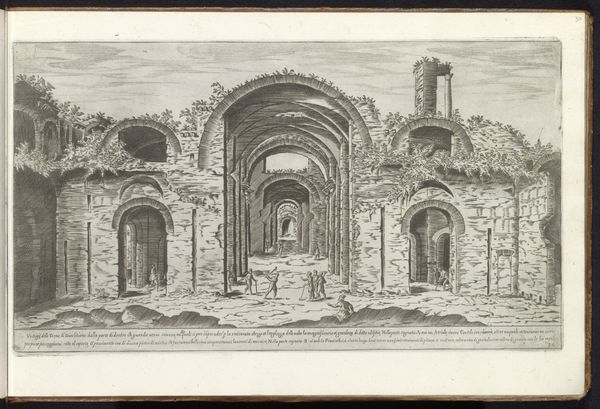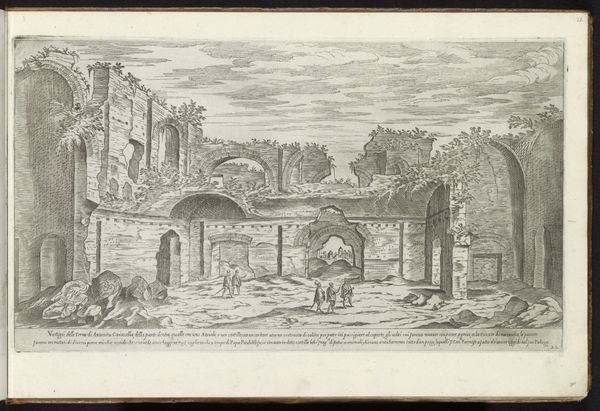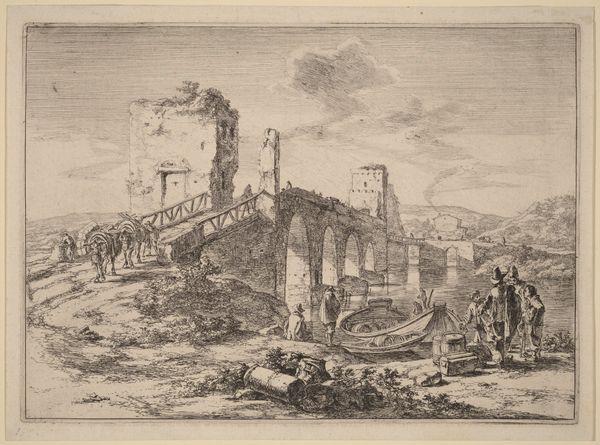
drawing, print, etching, paper, architecture
#
pen and ink
#
drawing
# print
#
etching
#
landscape
#
perspective
#
paper
#
romanesque
#
architecture
Dimensions: height 215 mm, width 381 mm
Copyright: Rijks Museum: Open Domain
Editor: Here we have Étienne Dupérac's "Thermen van Constantijn te Rome," made around 1575. It’s an etching, primarily done in pen and ink on paper. It seems to depict the ruins of a large Roman bathhouse. I'm immediately struck by how the architecture seems to be actively decaying and crumbling. What draws your attention in this image? Curator: I see the process of making and unmaking on display here. Consider the labor invested in the original Roman construction versus the depiction centuries later, etched in ink. It begs the question: what materials remain, and in what form? The original construction employed concrete and brick—robust, but ultimately subject to the elements and potential reuse. Editor: So, you're less focused on the ruins themselves, but more interested in how those materials have been transformed? Curator: Precisely! And Dupérac’s role. He didn't just witness these ruins, he processed them. Pen and ink transform monumental architecture into reproducible image—architecture consumed as prints. Consider where this print would have been sold, who the likely purchasers were, and what social function this imagery served. What do you imagine its purpose was? Editor: Perhaps to allow those who could not visit Rome a way to see these ancient structures, functioning almost like a postcard? Curator: Perhaps. But also as a memento mori, an opportunity for the artist and consumer to reflect on the glory and transience of human endeavor. Think about how the physical act of etching these fine lines mimics the slow, erosive power of time acting upon stone and brick. The making reflects the unmaking, doesn’t it? Editor: I never considered the labor involved in the etching process as a commentary on the depicted decay. I'll definitely view architectural prints differently now. Curator: Exactly. Considering materiality reframes our understanding, doesn't it? The means of production significantly shapes our experience.
Comments
No comments
Be the first to comment and join the conversation on the ultimate creative platform.

